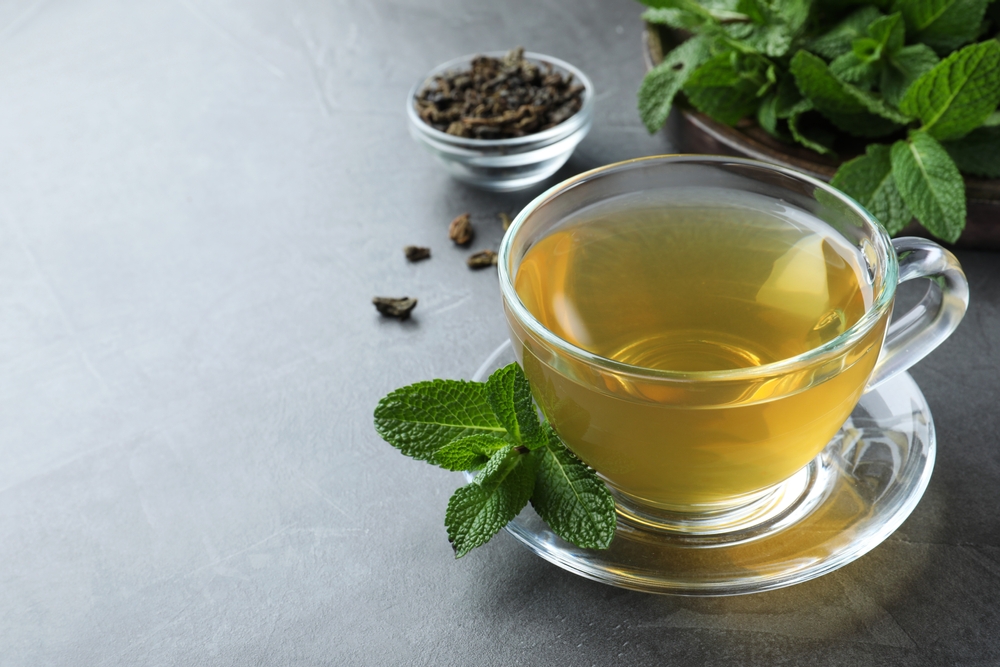That carefully selected herbal tea sitting in your kitchen cupboard might have all the medicinal potential in the world, but here’s the uncomfortable truth — you’re probably brewing it all wrong.
Most people treat medicinal teas like their morning cup of Earl Grey, steeping for a few minutes before sipping away. No wonder they’re not seeing results. It’s like expecting a single crumb of bread to satisfy your hunger.
The difference between a pleasant-tasting herbal beverage and a medicinal preparation that actually delivers therapeutic compounds comes down to specifics most tea companies conveniently leave off their packaging. Let’s fix that.
Why your current brewing method isn’t delivering results
Most commercial tea bags contain finely shredded herbs that have been sitting on shelves for months, if not years. By the time you steep that tea bag for three minutes in water that’s not even hot anymore, you’re extracting a fraction of the beneficial compounds.
Plant medicine is fundamentally about extraction — pulling the beneficial compounds from plant material into a medium your body can absorb. Different medicinal compounds require different extraction methods. Some dissolve readily in water, while others need fat, alcohol, or specific temperature ranges to become bioavailable.
That one-size-fits-all brewing approach on most tea packages ignores these crucial differences. Delicate flower petals need different treatment than tough roots or barks. Oil-soluble compounds need different extraction methods than water-soluble ones.
And time matters tremendously. Most medicinal preparations require much longer steeping times than your average breakfast tea. Those three-minute steeps might work for caffeine extraction, but they’re woefully inadequate for pulling medicinal compounds from most herbs.
The temperature secrets that unlock herbal potency
Water temperature dramatically affects which compounds you extract from herbs, yet most people pay little attention to this crucial variable.
For roots, barks, and tough seeds, you need water at a full rolling boil. These plant parts contain resilient compounds that require high heat to release. Your ginger tea for digestion or inflammation? Barely warm water isn’t going to extract those powerful gingerols and shogaols effectively.
Conversely, delicate flowers and leaves containing volatile essential oils can have their medicinal compounds damaged or evaporated by water that’s too hot. Those calming chamomile compounds are easily destroyed by boiling water, leaving you with a pleasant taste but minimal therapeutic effect.
For mucilaginous herbs that create healing slippery substances for sore throats or irritated digestive tracts, like marshmallow root or slippery elm, cold water extraction works better than hot. The cooling process allows these complex polysaccharides to slowly dissolve into a soothing gel-like consistency that coats irritated tissues.
Most effective herbal practitioners use specific temperature ranges for different plant medicines:
Around 200°F for roots, barks, seeds, and dried berries Around 190°F for stemmy herbs and tougher leaves Around 170°F for delicate flowers and aromatic leaves Room temperature or cold for mucilaginous herbs
When brewing combinations, start with the toughest ingredients at appropriate temperatures, then add more delicate herbs as the water cools to preserve their volatile compounds.
The steeping duration that transforms potency
That “steep for 5-10 minutes” instruction on commercial tea packages is designed for palatability, not medicinal effect. True medicinal preparations often require much longer extraction times.
Roots, barks, and seeds typically need 20-30 minutes minimum for therapeutic preparations, with some traditions recommending hours of simmering for maximum potency. Tough protective plant parts contain compounds that don’t readily dissolve without extended heat exposure.
Leaves and stems generally need 10-15 minutes, significantly longer than the 3-5 minutes suggested for culinary teas. Even delicate flowers usually require 5-10 minutes for full medicinal extraction.
The concentration matters tremendously too. That single tea bag in a large mug likely contains a homeopathic amount of actual herb — far too little for therapeutic effect. Medicinal preparations typically use 1-2 tablespoons of dried herb per cup of water, creating a much stronger preparation than commercial teas.
Of course, stronger isn’t always better. Some potent herbs require precise dosing. But for most gentle medicinal herbs, the standard commercial tea bag contains nowhere near the traditional therapeutic amount.
The plant parts that deliver specific benefits
Different parts of the same plant can have dramatically different medicinal properties, yet many commercial blends don’t specify which plant parts they contain.
Roots typically contain the plant’s most concentrated medicine, especially in perennials that store energy underground. They often provide deeper, more substantial therapeutic effects than aerial parts of the same plant.
Leaves generally contain more accessible compounds and often work more quickly in the body. They typically offer milder action than roots but can be highly effective for acute situations.
Flowers often contain delicate volatile compounds and tend to have affinity for the nervous system. Their medicine tends to be gentler but can be profound for emotional and sensory aspects of healing.
Seeds contain the plant’s reproductive potential and often have concentrated medicinal compounds designed to protect the next generation. They frequently offer potent medicine in small packages.
Knowing which plant part contains the compounds you need is crucial for effective medicinal tea preparation. Dandelion root supports liver function, while dandelion leaf acts as a diuretic. Lavender flower calms the nervous system, while lavender leaf has different properties. These distinctions matter tremendously for therapeutic outcomes.
The powerful extraction methods beyond basic steeping
Sometimes simple steeping isn’t enough to extract the full medicinal potential from herbs. Traditional herbal systems worldwide have developed various methods to enhance extraction:
Decoction involves simmering herbs in water for extended periods, typically 20-45 minutes. This method extracts deep-acting compounds from roots, barks, and seeds that won’t fully release with mere steeping. The resulting liquid is typically more concentrated and therapeutically potent than standard infusions.
Solar infusion utilizes the sun’s heat to slowly extract plant compounds over several hours. This gentle method preserves delicate aromatics while still pulling substantial medicine from the herbs. Simply place herbs in a clear glass container of water and set in direct sunlight for 3-8 hours.
Overnight infusions allow herbs to release their compounds slowly over 8-12 hours. This approach works particularly well for nutritive herbs high in minerals and for mucilaginous herbs that create soothing gels. The resulting tea often has a richer mineral profile than quickly steeped versions.
Adding fat significantly increases the extraction of fat-soluble compounds that would otherwise remain in the plant material. A small amount of coconut oil, butter, or cream added to hot herbal tea can dramatically increase the bioavailability of certain medicinal compounds, particularly those that affect the nervous system.
The storage techniques that preserve medicinal potency
Even perfectly brewed medicinal tea can lose potency rapidly if stored improperly. Most herbal infusions begin deteriorating within hours of preparation, yet many people make large batches and store them for days.
For maximum therapeutic effect, medicinal teas are ideally consumed within 24 hours of preparation. Beyond this timeframe, oxidation and bacterial growth begin degrading the beneficial compounds and potentially creating harmful ones.
If you must store medicinal infusions, keep them refrigerated in glass containers with tight-fitting lids that minimize air exposure. Avoid plastic, which can leach chemicals into acidic herbal preparations and absorb essential oils from the tea.
For convenience, consider making concentrated infusions that can be diluted as needed throughout the day, rather than preparing large quantities of ready-to-drink tea that will sit for hours or days.
Alternatively, prepare the dry herbs in advance by mixing your formula in a sealed glass jar, then scoop out the appropriate amount for fresh preparation as needed. This approach preserves the integrity of the plant material until you’re ready to extract its medicine.
The timing that maximizes therapeutic effects
When you consume medicinal tea matters almost as much as how you prepare it. Timing can dramatically impact how your body utilizes the beneficial compounds.
Digestive herbs generally work best when taken 15-30 minutes before meals, allowing their compounds to prepare the digestive system. Taking them after eating significantly reduces their effectiveness in stimulating digestive secretions.
Nervine herbs that affect the nervous system often work more powerfully when taken away from meals, allowing more direct absorption without competition from food. The exception is nervines intended for sleep, which pair well with a small fat-containing snack to enhance absorption of fat-soluble calming compounds.
Diuretic herbs are most effective when consumed early in the day, preventing sleep disruption from increased urination. Conversely, urinary antiseptic herbs often work best when taken throughout the day in divided doses to maintain consistent levels in the urinary tract.
For chronic conditions, consistency trumps timing. Regular daily consumption over weeks often yields better results than occasional high doses, as the body gradually responds to the gentle nudging of plant medicine rather than dramatic intervention.
The combinations that amplify medicinal action
While single-herb preparations have their place, traditional herbal systems worldwide recognize that thoughtful combinations often create more effective medicine than isolated herbs.
Synergistic pairings can address multiple aspects of a condition simultaneously or enhance the body’s ability to utilize the primary herb. For instance, combining anti-inflammatory herbs with circulatory stimulants helps deliver the anti-inflammatory compounds to affected tissues more effectively.
Carminative herbs like fennel or cardamom make excellent additions to medicinal formulas as they enhance absorption of other herbs while reducing potential digestive discomfort. This is why traditional formulas often include small amounts of aromatic seeds even when they’re not the primary therapeutic agent.
Licorice root serves as an “harmonizer” in many traditional formulas, moderating the effects of stronger herbs while enhancing overall formula effectiveness. Its sweetness also makes medicinal preparations more palatable without refined sugar.
Even a small amount of circulatory herbs like ginger or cinnamon can enhance a formula’s effectiveness by improving blood flow and helping distribute other herbs’ compounds throughout the body.
The most effective medicinal tea formulas aren’t random combinations of herbs with similar properties but carefully constructed preparations where each herb plays a specific role in supporting the overall therapeutic goal.
The mindful preparation that enhances effectiveness
Traditional herbal systems worldwide incorporate intention and mindfulness into medicine making, recognizing that the preparer’s energy influences the preparation’s effectiveness.
While modern science hasn’t validated this aspect of herbal medicine, generations of traditional healers emphasize the importance of focused attention during preparation. At minimum, this mindfulness ensures careful adherence to proper methods rather than distracted brewing that might compromise quality.
Simple practices like expressing gratitude for the plants, focusing on healing intention while preparing the infusion, and minimizing distractions during preparation can transform the experience from mundane to medicinal.
This mindful approach extends to consumption as well. Taking a moment to inhale the aroma before drinking activates the olfactory system, which can enhance the tea’s effects through aromatherapy pathways. Savoring the flavor notes rather than quickly drinking stimulates digestive secretions that improve absorption of medicinal compounds.
Herbal medicine has always bridged the physical and psychological aspects of healing. By approaching medicinal tea preparation with intention and awareness, you honor this tradition while potentially enhancing the brew’s effectiveness through your focused attention to quality and detail.
When brewed with proper techniques, appropriate timing, and mindful attention, herbal teas transform from pleasant beverages into potent plant medicine capable of supporting genuine healing. That’s the difference between tea that tastes nice and tea that actually works.















